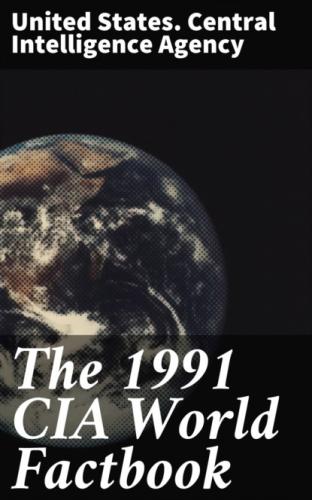_#_National holiday: National Day, 26 October (1955)
_#_Executive branch: president, chancellor, vice chancellor, Council of Ministers (cabinet)
_#_Legislative branch: bicameral Federal Assembly (Bundesversammlung) consists of an upper council or Federal Council (Bundesrat) and a lower council or National Council (Nationalrat)
_#_Judicial branch: Supreme Judicial Court (Oberster Gerichtshof) for civil and criminal cases, Administrative Court (Verwaltungsgerichtshof) for bureaucratic cases, Constitutional Court (Verfassungsgerichtshof) for constitutional cases
_#_Leaders:
Chief of State—President Kurt WALDHEIM (since 8 July 1986);
Head of Government—Chancellor Franz VRANITZKY (since 16 June 1986); Vice Chancellor Josef RIEGLER (since 19 May 1989)
_#_Political parties and leaders:
Socialist Party of Austria (SPO), Franz VRANITZKY, chairman;
Austrian People's Party (OVP), Josef RIEGLER, chairman;
Freedom Party of Austria (FPO), Jorg HAIDER, chairman;
Communist Party (KPO), Franz MUHRI, chairman;
Green Alternative List (GAL), Andreas WABL, chairman
_#_Suffrage: universal at age 19; compulsory for presidential elections
_#_Elections:
President—last held 8 June 1986 (next to be held May 1992); results of Second Ballot—Dr. Kurt WALDHEIM 53.89%, Dr. Kurt STEYRER 46.11%;
National Council—last held 7 October 1990 (next to be held October 1994); results—SP0 43%, OVP 32.1%, FPO 16.6%, GAL 4.5%, KPO 0.7%, other 0.32%; seats—(183 total) SP0 80, OVP 60, FP0 33, GAL 10
_#_Communists: membership 15,000 est.; activists 7,000–8,000
_#_Other political or pressure groups: Federal Chamber of Commerce and Industry; Austrian Trade Union Federation (primarily Socialist); three composite leagues of the Austrian People's Party (OVP) representing business, labor, and farmers; OVP-oriented League of Austrian Industrialists; Roman Catholic Church, including its chief lay organization, Catholic Action
_#_Member of: AfDB, AG (observer), AsDB, BIS, CCC, CE, CERN, CSCE,
EBRD, ECE, EFTA, ESA, FAO, G-9, GATT, IADB, IAEA, IBRD, ICAO, ICC, ICFTU,
IDA, IEA, IFAD, IFC, ILO, IMF, IMO, INTELSAT, INTERPOL, IOC, IOM, ISO,
ITU, LORCS, NAM (guest), NEA, OAS (observer), OECD, PCA, UN, UNCTAD,
UNESCO, UNDOF, UNFICYP, UNHCR, UNIDO, UNIIMOG, UNTSO, UPU, WCL,
WFTU, WHO, WIPO, WMO, WTO
_#_Diplomatic representation: Ambassador Friedrich HOESS; Embassy at 2343 Massachusetts Avenue NW, Washington DC 20008; telephone (202) 483–4474; there are Austrian Consulates General in Chicago, Los Angeles, and New York;
US—Ambassador Roy Michael HUFFINGTON; Embassy at Boltzmanngasse 16, A-1091, Vienna (mailing address is APO New York 09108–0001); telephone [43] (222) 31–55-11; there is a US Consulate General in Salzburg
_#_Flag: three equal horizontal bands of red (top), white, and red
_*Economy #_Overview: Austria boasts a prosperous and stable capitalist economy with a sizable proportion of nationalized industry and extensive welfare benefits. Thanks to an excellent raw material endowment, a technically skilled labor force, and strong links to West German industrial firms, Austria has successfully occupied specialized niches in European industry and services (tourism, banking) and produces almost enough food to feed itself with only 8% of the labor force in agriculture. Improved export prospects from German unification and the opening of Eastern Europe will also boost the economy during the next few years. Living standards are roughly comparable with the large industrial countries of Western Europe. Problems for the l990s include an aging population, the high level of subsidies, and the struggle to keep welfare benefits within budget capabilities. Austria, which has applied for EC membership, is currently involved in EC and European Free Trade Association negotiations for a European Economic Area and will have to adapt its economy to achieve freer movement of goods, services, capital, and labor with the EC.
_#_GDP: $111.0 billion, per capita $14,500; real growth rate 4.5% (1990)
_#_Inflation rate (consumer prices): 3.3% (1990)
_#_Unemployment: 5.4% (1990)
_#_Budget: revenues $44.1 billion; expenditures $49.6 billion, including capital expenditures of $NA (1990)
_#_Exports: $40.9 billion (f.o.b., 1990);
commodities—machinery and equipment, iron and steel, lumber, textiles, paper products, chemicals;
partners—EC 64.8%, EFTA 10.3%, CEMA 7.7%, US 3.2%, Japan 1.5%
_#_Imports: $46.6 billion (c.i.f., 1990);
commodities—petroleum, foodstuffs, machinery and equipment, vehicles, chemicals, textiles and clothing, pharmaceuticals;
partners—EC 68.4%, EFTA 7%, CEMA 5.7%, Japan 4.6%, US 3.6%
_#_External debt: $11.8 billion (1990 est.)
_#_Industrial production: real growth rate 8.5% (1990); accounts for 34% of GDP
_#_Electricity: 17,562,000 kW capacity; 49,290 million kWh produced, 6,500 kWh per capita (1989)
_#_Industries: foods, iron and steel, machines, textiles, chemicals, electrical, paper and pulp, tourism, mining
_#_Agriculture: accounts for 3.2% of GDP (including forestry); principal crops and animals—grains, fruit, potatoes, sugar beets, sawn wood, cattle, pigs poultry; 80–90% self-sufficient in food
_#_Economic aid: donor—ODA and OOF commitments (1970–89), $2.4 billion
_#_Currency: Austrian schilling (plural—schillings); 1 Austrian schilling (S) = 100 groschen
_#_Exchange rates: Austrian schillings (S) per US$1—10.627 (January 1991), 11.370 (1990), 13.231 (1989), 12.348 (1988), 12.643 (1987), 15.267 (1986), 20.690 (1985)
_#_Fiscal year: calendar year
_*Communications #_Railroads: 6,028 km total; 5,388 km government owned and 640 km privately owned (1.435- and 1.000-meter gauge); 5,403 km 1.435-meter standard gauge of which 3,051 km is electrified and 1,520 km is double tracked; 363 km 0.760-meter narrow gauge of which 91 km is electrified
_#_Highways: 95,412 km total; 34,612 are the primary network (including 1,012 km of autobahn, 10,400 km of federal, and 23,200 km of provincial roads); of this number, 21,812 km are paved and 12,800 km are unpaved; in addition, there are 60,800 km of communal roads (mostly gravel, crushed stone, earth)
_#_Inland waterways: 446 km
_#_Ports: Vienna, Linz (river ports)
_#_Merchant marine: 32 ships (1,000 GRT or over) totaling 150,735 GRT/252,237 DWT; includes 26 cargo, 1 container, 1 chemical tanker, 4 bulk
_#_Pipelines: 554 km crude oil; 2,611 km natural gas; 171 km refined products
_#_Civil air: 25 major transport aircraft
_#_Airports: 55 total, 54 usable; 20 with permanent-surface runways; none with runways over 3,659 m; 5 with runways 2,440–3,659 m; 4 with runways 1,220–2,439 m
_#_Telecommunications: highly developed and efficient; 4,014,000 telephones; extensive TV and radiobroadcast systems; stations—6 AM, 21 (545 repeaters) FM, 47 (870 repeaters) TV; satellite stations operating in INTELSAT 1 Atlantic Ocean earth station and 1 Indian Ocean earth station and EUTELSAT systems
_*Defense Forces #_Branches: Army, Flying Division, Gendarmerie
_#_Manpower availability: males 15–49, 1,957,414; 1,646,179 fit for military service; 48,038 reach military age (19) annually
_#Defense
